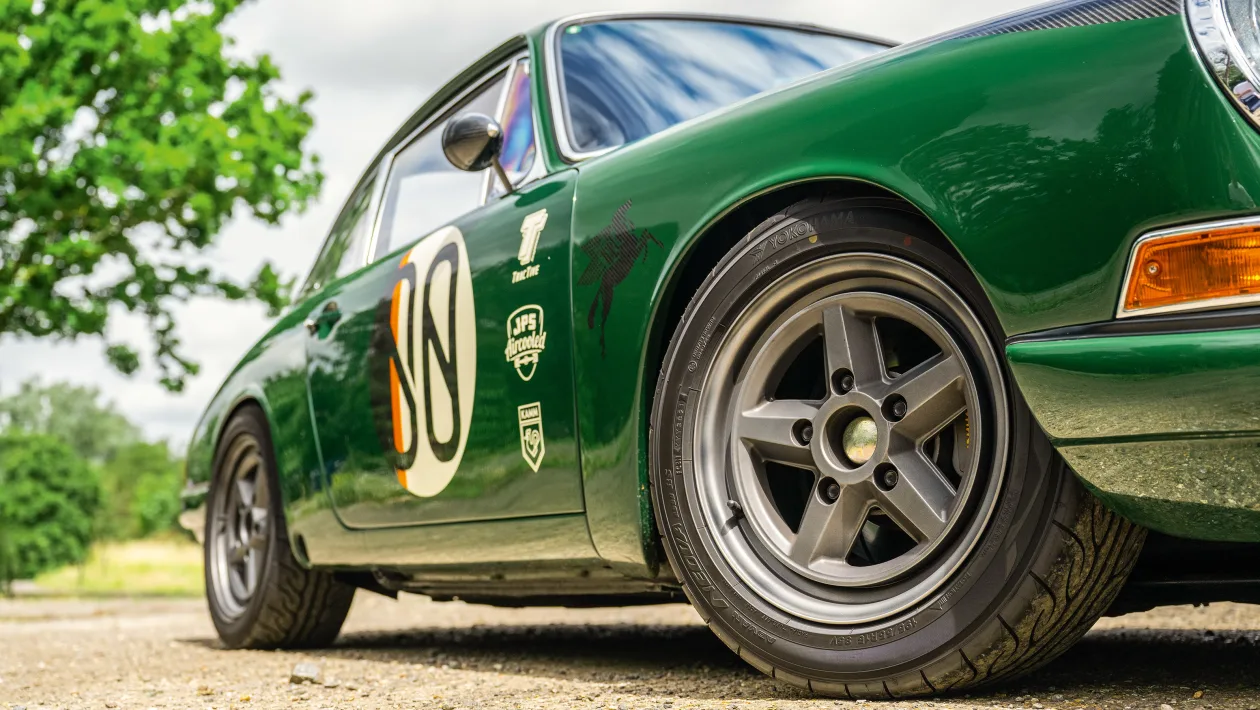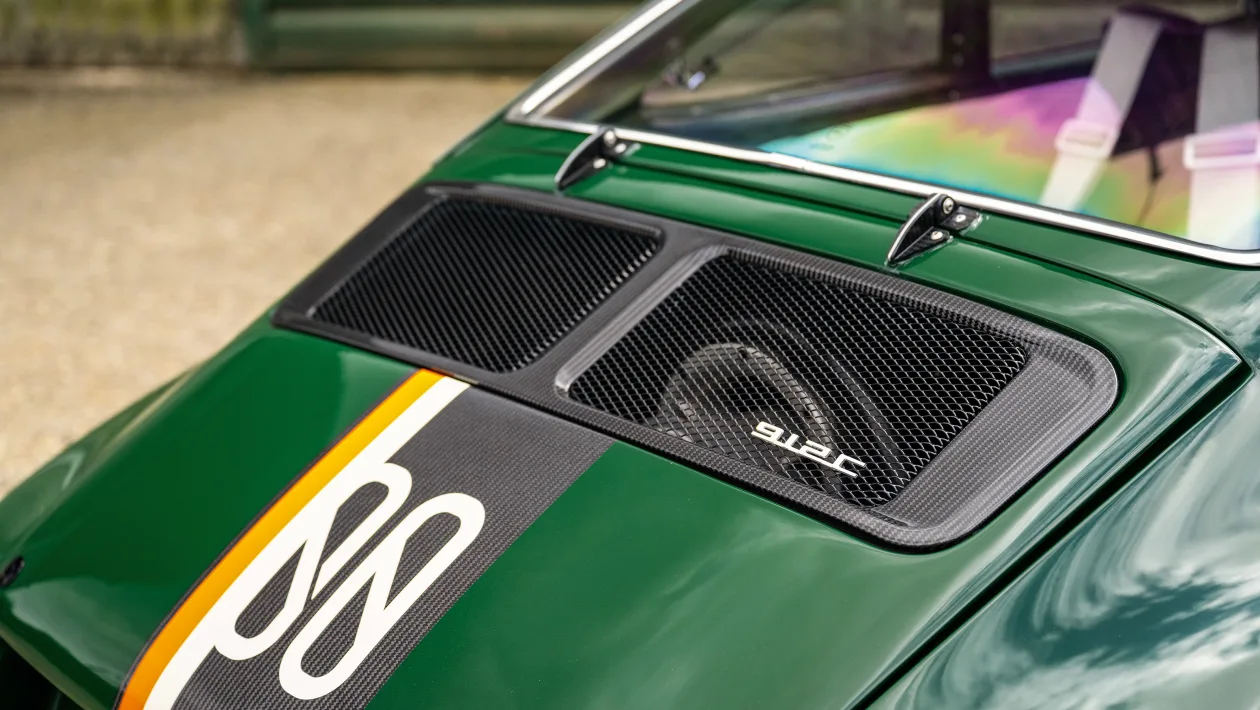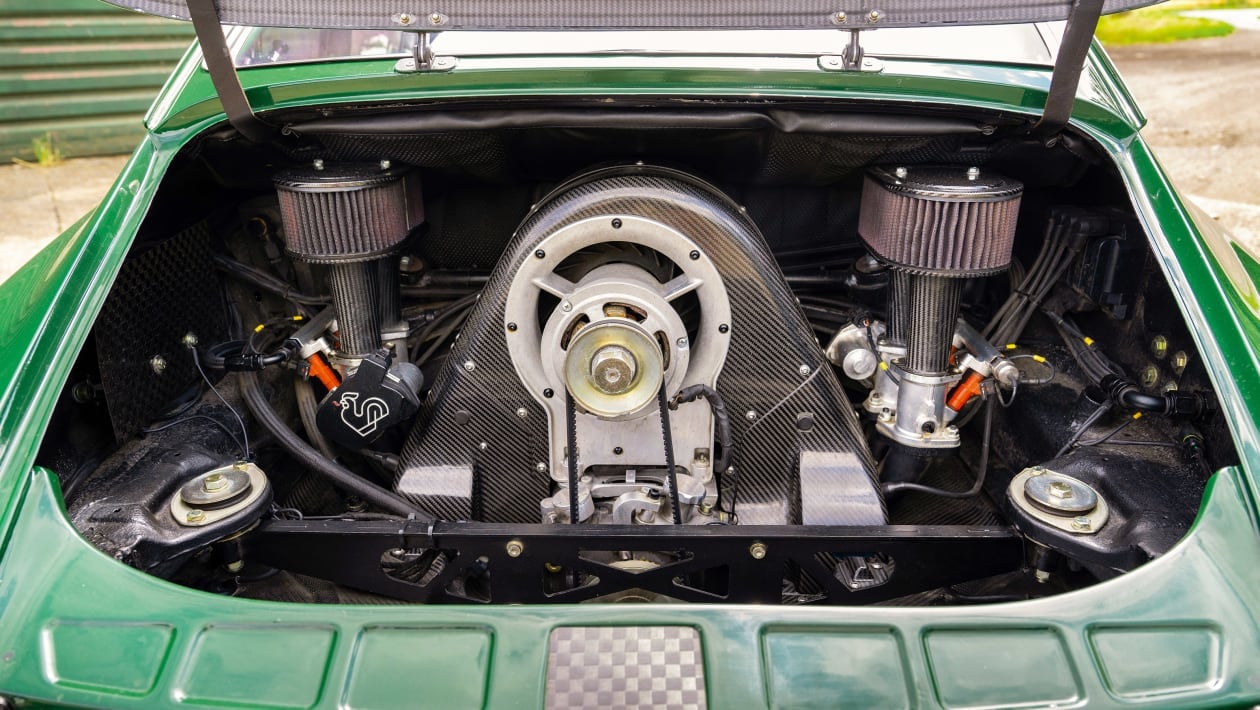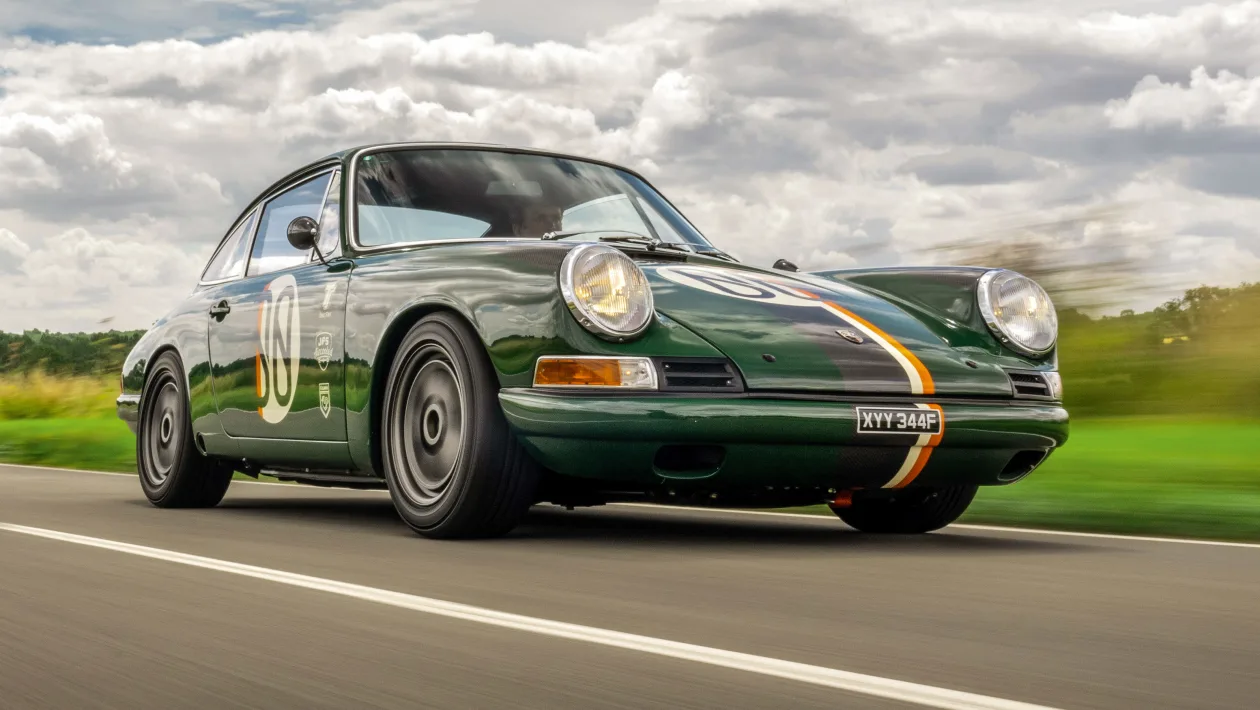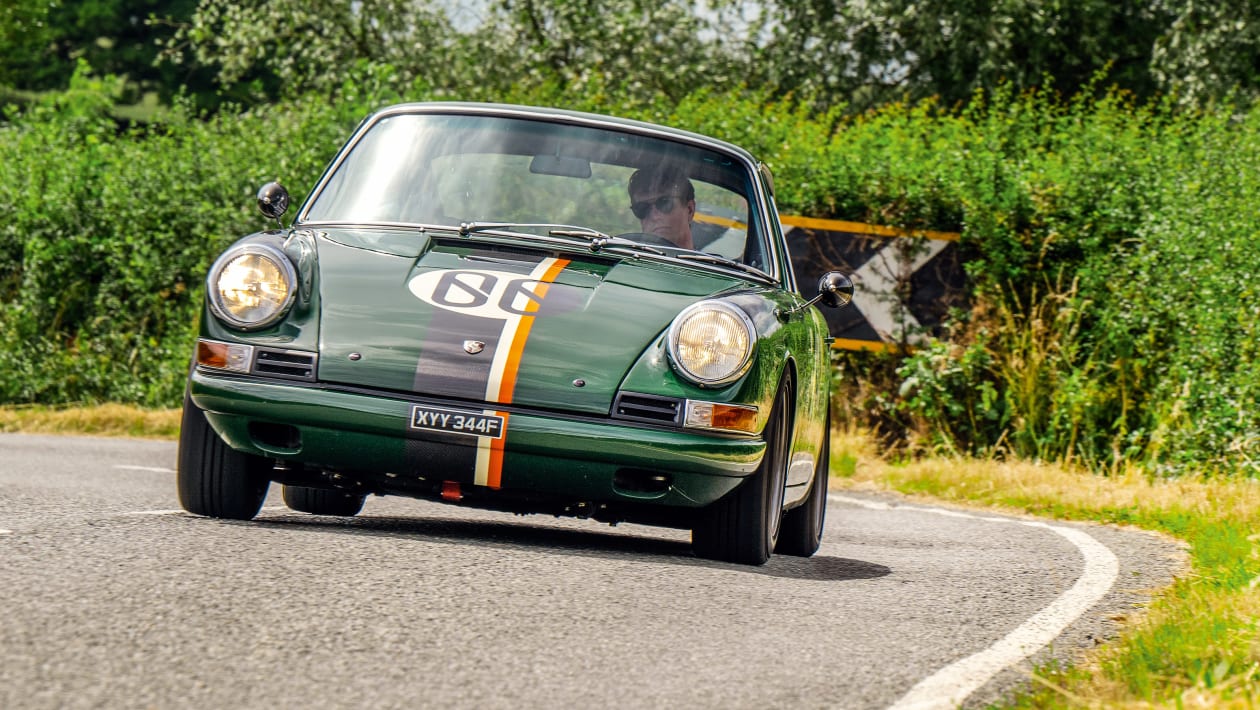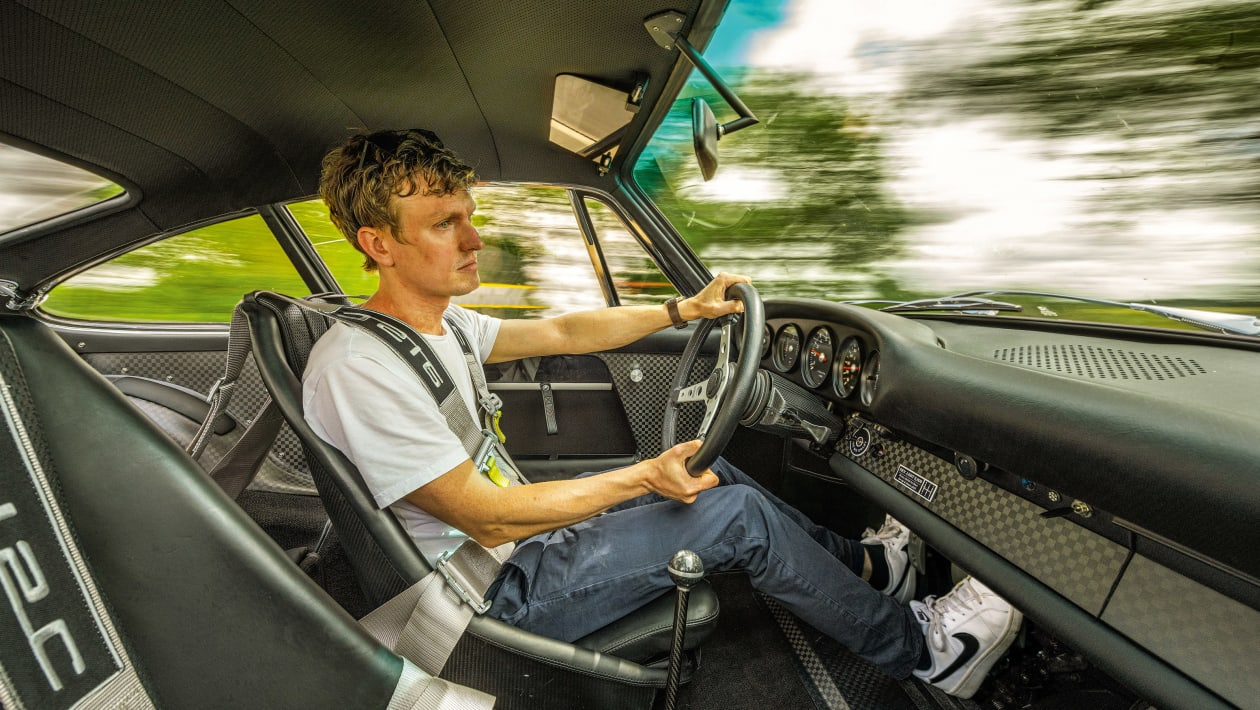The flat-four Porsche 912 was once seen as the 911’s poor relation. Budapest-based firm Kamm aims to unlock its ultimate potential.
Apparently we all ought to spend more time being ‘present’, ‘in the moment’, ‘conscious’. Right now, both hands on the unassisted wheel, sole of my right foot in conversation with the servo-free brake pedal, ears full of four horizontally opposed cylinders doing their thing and mind absorbed with the road ahead and the next gearchange to come, I feel pretty darn present.
Such is the way with many classic cars from the ’60s of course. Just as so often the downside is that brakes, power, reliability and so forth aren’t quite present enough. Herein lies the appeal of the restomod, a classic car with modern engineering upgrades, and the Porsche 911 has become the darling of the scene, myriad specialists offering their own take on the legend. Hungarian outfit Kamm Manufaktur, however, is concentrating not on the 911 but the 912.
On sale from 1965 to ’69, the 912 was once snobbily seen as the poor man’s 911, with a Porsche 356-derived flat-four in place of the 911’s six. Today it’s a sought-after classic. But not an especially potent one, with around 67kW in most standard cars. The car pictured here has 142kW and weighs 760kg, giving it a similar power-to-weight ratio to a present-day 911 Carrera.
It’s Kamm’s demonstrator, acquired by company founder Miki Kázmér as a solid but careworn standard 912 before beginning its transformation. The Budapest-based operation’s 30-strong team (12 of which are full-time staff) includes engineers with expertise in motorsport, restoration, 3D scanning and composites, and the company manufactures almost all of the components in-house. Kázmér has a particular love for air-cooled engines born from his first car, a Beetle, and explains that Budapest has a culture of sympathetically tuning and improving classic cars, an ethos Kamm wishes to apply to the 912. The company’s first three customer cars, created to buyers’ individual specifications, are in build now.
Just how far customers go down the ‘mod’ route of the restomod equation is up to them; this car, being both working prototype and demonstrator, has the full works. Price depends how far along that scale customers would like to indulge, and whether they supply their own 912 donor car or ask Kamm to source one on their behalf. Condition of the original car is a variable too, of course. As a rough guide, though, the base cost of a ‘new’ Kamm 912c is around $523,000, plus donor car.
That, of course, is an exceedingly large amount of money. The extent of the engineering work at play beneath the surface does much to justify that. As does the surface itself: the ‘c’ suffix in 912c stands for carbon and practically all of the bodywork, including bonnet, wings, doors, engine cover and bay, boot floor and even roof if desired, can be made entirely from carbonfibre. Beneath the panels, the 912’s steel shell is stiffened in places, for example around the suspension mounts. The beautifully finished carbon weave is deliberately partially exposed as part of this car’s livery, alongside the period-correct Irish Green paint, but bare carbon or fully painted are also options. If the latter, you’d never know the bodywork was carbonfibre; to the naked eye it looks all but identical to the original.
To that end, Kamm has refurbed the original ’60s headlights rather than fitting jarring modern LED units, and likewise much of the original chrome trim. The side windows are refitted with Lexan rather than glass, contributing towards that scant 760kg kerb weight (with air-con, oil and other fluids, but without fuel). Kázmér says they could make it lighter still but that would be at the expense of refinement. ‘And I want this to be a car that people use,’ he emphasises. This demonstrator has done all sorts, from track testing and ice driving to school runs and daily-driver donkey work.
The four-cylinder donkey in the tail has been bored out from its original 1.6 litres to just over 2, and has undergone all kinds of alterations, including a new cylinder head. Engine work is a collaboration between Kamm and Swiss-based specialist JPS Aircooled, which carries out machining and long block parts. Assembly is in Budapest, with top-end work done internally at Kamm, which also designed the intake system, individual throttle bodies and exhaust.
The 2.0-litre develops 120kW in its regular ‘touring’ map; pulling out a little choke-like switch in the dash, labelled ‘Drive Me Crazy’, toggles to the full 120kW. The engine is capable of being tuned to more than 150kW, and a race-spec engine is available too, but Kamm has set the 120kW ceiling for road use in the interests of long-term reliability.
The brakes have been uprated too, with four-piston calipers at the front by AP racing (two-piston at the rear), far more than strictly necessary for such a light car. They’re hidden inside new five-spoke wheels, with Yokohama tyres bearing a naughty, trackday-style tread pattern. One of the biggest technological leaps is hidden within the arches: electronically controlled dampers, supplied by Dutch-based TracTive, with a five-way dial on the dashboard to adjust their damping force.
That dash is trimmed in carbonfibre but, again, can be specced with period-correct trim. A concealed Bluetooth speaker system can be fitted if customers want music, or an entirely stripped interior and integrated roll-cage if they want a track-spec 912c. The front passenger’s feet meet a carbon kickplate, behind which the battery is currently located; that will soon move to the nose for extra space. There’s carbon too for the seats and the gearlever, the latter a tall wand connected via a linkage of Kamm’s own design to an original Porsche 901 gearbox. Slow synchromesh is a characteristic of said ’box, and I crunch it when shifting from neutral into first. Miki is commendably unconcerned. ‘Don’t worry; you can’t break it,’ he reassures.
There are no gates to the five-speed gearshift either, and it demands concentration to avoid mis-shifting, but before too long it feels natural and you’re swiftly swapping gears without a second thought (final cars will have a firmer spring to self-centre the lever, making shifts more intuitive.) The gearing is long – second and third will do most of the time on British B-roads – but since the car’s so light, there’s always a strong sense of pull. And the engine itself is a big character: raucous in a good way, with a rich, husky tone that’s a genuine pleasure to listen to.
That note hardens above 4000rpm, where the engine does its best work. Particularly when the ‘Crazy’ map is toggled to unlock the extra 22kW. The 912c is light enough for that to make a tangible difference, with an extra dose of urgency to both acceleration and response.
At urban speeds, in its regular map, the powertrain is docile, smooth and tractable – just very loud. At higher speeds, considerable road noise becomes part of the equation too. Kamm is investigating lightweight soundproofing options; at the moment earplugs would be a must for long journeys. Since our test, a valved exhaust has been fitted, aiding touring capability.
The dampers’ five switchable modes are a secret weapon in that regard, becoming truly pliant in their softest setting and alert like a track car in their firmest. This is the second time we’ve driven this car – the first was last year, earlier in its development, when it had a more track-orientated, uncompromising set-up. It’s now in near-final specification and there have been many changes in the interim: to brakes, suspension, gearshift, engine tuning, and steering too, exchanging a slightly frantic 1.7-turns-lock-to-lock rack for a more measured 2.4-turns item.
It feels lovely. The quicker rack will still be offered for more track-biased cars, but the slower version is ideal for the road. As is the new suspension set-up. Setting the new electronic dampers to their firmest, five-out-of-five setting recalls the car’s previous, ultra-firm ride; one-out-of-five gives cushy ride comfort but feels a touch floaty if you’re pressing on. Position three or four is about right for a typical British B-road.
The extra body movement afforded by the softer modes helps you feel what’s going on, although it takes me a little while to build confidence to the point of pushing the car hard. It’s partly a psychological thing, having heard so many ghost stories about ’60s Porsches’ tricky handling, but the 912 is a far more benign, neutral car on the limit. The lighter, shorter engine shifts the weight distribution further forward (open the engine cover and, apart from being struck by how much carbonfibre there is in there, you’re also struck by how much space there is behind the engine in the 911-sized bay). And as Miki points out, ‘we’re a long way from the original handling.’ Grippy, stiff-sidewalled Yokohamas play their part, too, and everything hangs together nicely dynamically. A limited-slip diff helps pivot the 912c into corners – and put its power down cleanly on the way out (on this admittedly warm, dry day).
Every touchpoint is much improved from our last encounter with the car: steering, gearshift, and especially the brakes, unassisted but powerful and with great feedback through the race-spec, floor-hinged Tilton pedal set. As with many classic cars, vision is superb through the slim-pillared, upright screen, while the 912’s narrowness means you can choose a multitude of lines through a corner and also makes it easy to manoeuvre in town, even with the unassisted steering.
It would be a stretch to describe the 912c as fast. But it’s more than brisk, and I’ve no doubt that with a good driver carrying momentum it could embarrass a lot of far more powerful cars, on the road or on a track. It’s a fun thought. And, as with many cars of this age, you’re so connected to the road and your surroundings that it often feels like you’re going faster than you really are. It’s difficult to see past 100km/h on the speedo because the steering wheel masks its upper reaches, but 110km/h or so feels like you’re doing a ton. Top speed is 238km/h with a long-ratio gearbox; Kamm also offers a short-ratio option, topping out at 209km/h.
It’s a ton of cash, too, of course. I can’t imagine parting with over $500k for this car. But I can see why somebody would. The 912c has a character all of its own. Kázmér’s enthusiasm for his passion project is contagious, and the attention to detail is unstinting. And with the work being carried out in-house to such a thorough degree, it feels justifiable to think of it as a Kamm product, as opposed to an old car with some mods.
When I drove the car last year I found it a lovely thing but wondered if I might get as much enjoyment from a regular 912. Now it’s a much more resolved entity: a car that drives in its own inimitable way, flows sweetly down the road, unlocks the 912’s potential and evolves it into something different without losing its essential character or turning it into a caricature. It’s a totally absorbing machine to drive, fast or slow; a car in which you’re always in the moment. Of course, you could get a similar layer of involvement in, say, a Caterham or a Lotus Exige for colossally less outlay, but the Kamm is something different, is more practical and useable (to an extent) than a bare-bones open sports car, and, for a wealthy driver who has everything, can offer its own singular appeal.





